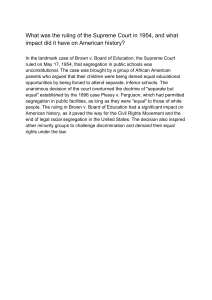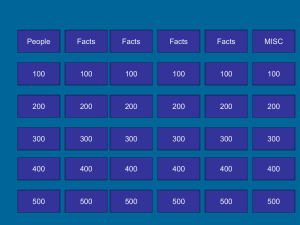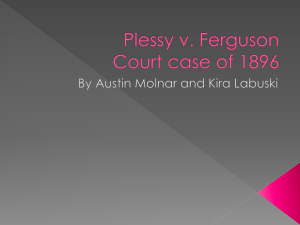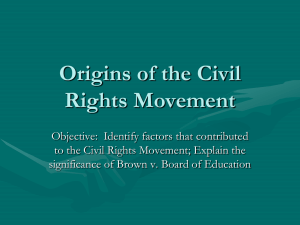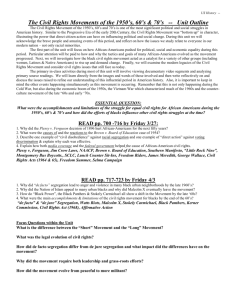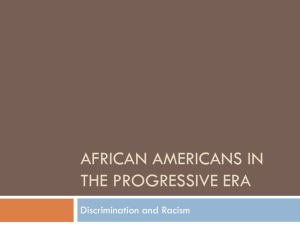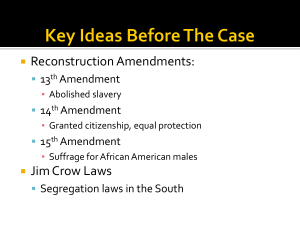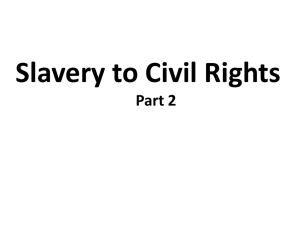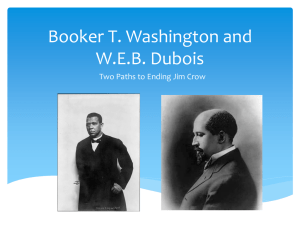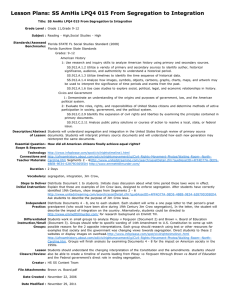IV. Equality Before the Law
advertisement
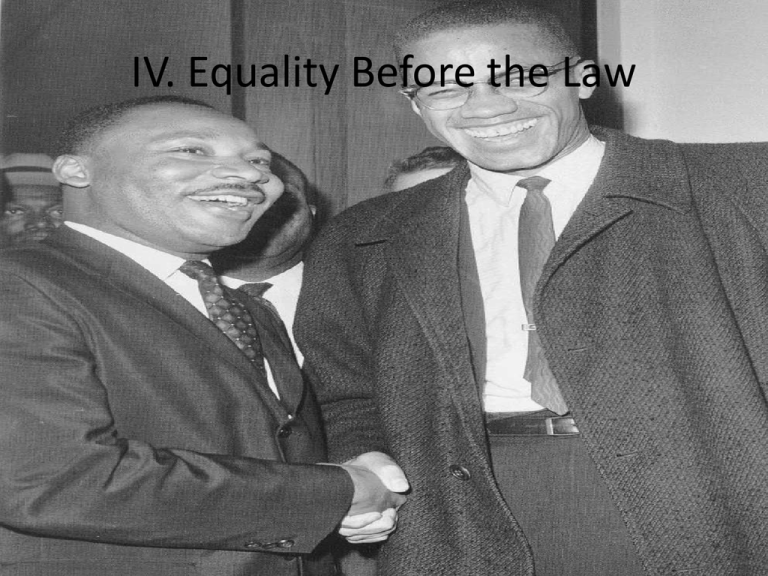
IV. Equality Before the Law A. Equal Protection • Discrimination – Treating individuals unfairly solely because of their race, gender, ethnic group, sexual orientation, age, or religion • Our government is not able to discriminate in any way B. Segregation in America • Segregation – Separation of one group of people from another • After the end of Reconstruction every Southern state rewrote their constitutions to include segregation • Jim Crow Laws – Laws that separate people on the basis of race – Start after the election of 1876 Stage Character: Jim Crow C. Separate But Equal • Plessy v. Ferguson (1896) • Louisiana law required separate seating for blacks and whites on public railroads • Homer Plessy argued that his right to equality were violated D. Court’s Ruling • Ruled that segregation was permitted if facilities were equal – Separate but Equal • Segregation was the law of the land for the next 60 years E. Times a Changing • Gaines v. Canada (1938) • Lloyd Gaines, an African American, was not allowed to attend law school at an all-white University of Missouri • State offered no separate school for blacks F. Court’s Ruling • State was required to admit Gaines or create a new school for him to attend • School decided to admit Gaines • Court upheld the separate but equal doctrine Executive Order 9981 – Primary Source (July 31,1948) G. Time for Real Change • Brown v. The Board of Education (1954) – One of the most important cases in 20th century • Linda Brown was not permitted to attend a local school because she was black Brown v. Board of Education 1954 – Primary Source H. Court’s Ruling • Court ruled that separate had never been equal • No room for discrimination in the realm of public education • Overturned Plessy v. Ferguson • States were forced to bus students and integrate schools • Massive resistance erupted across the South • Brown v Board
